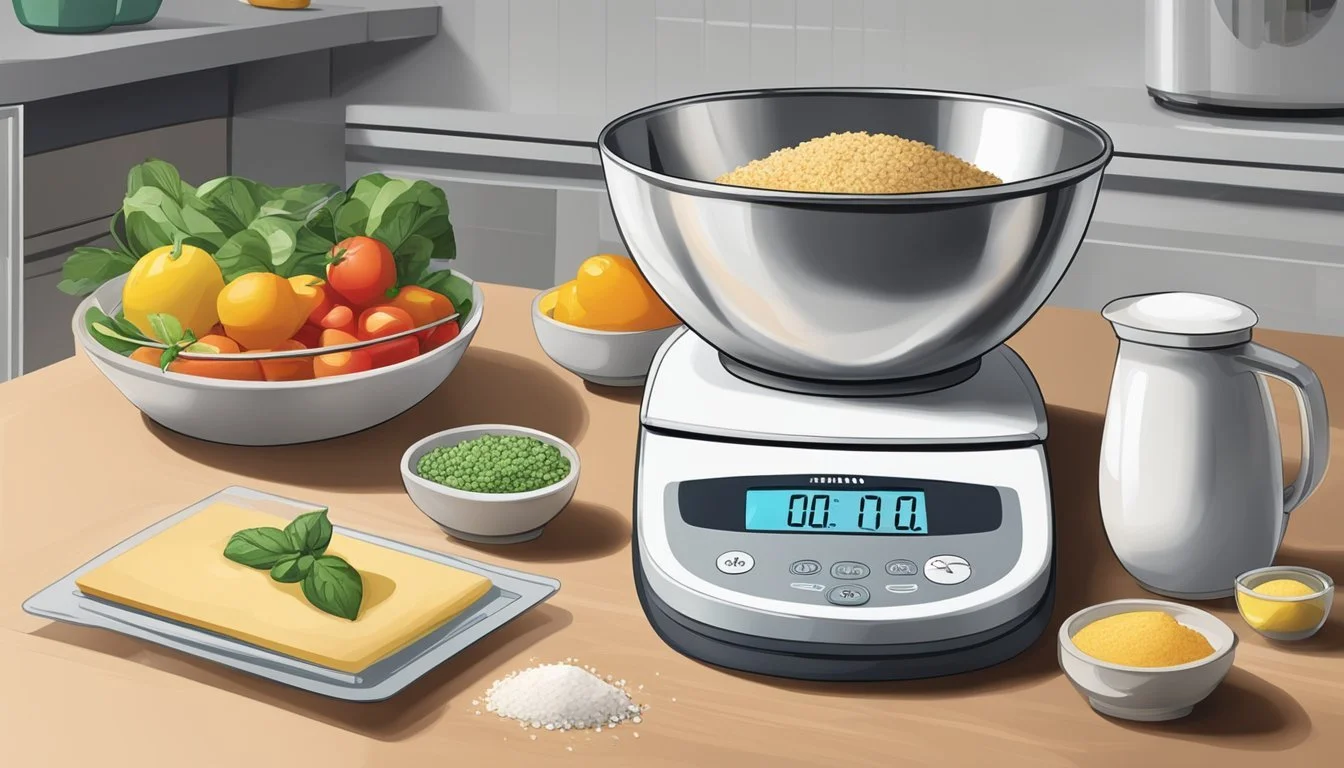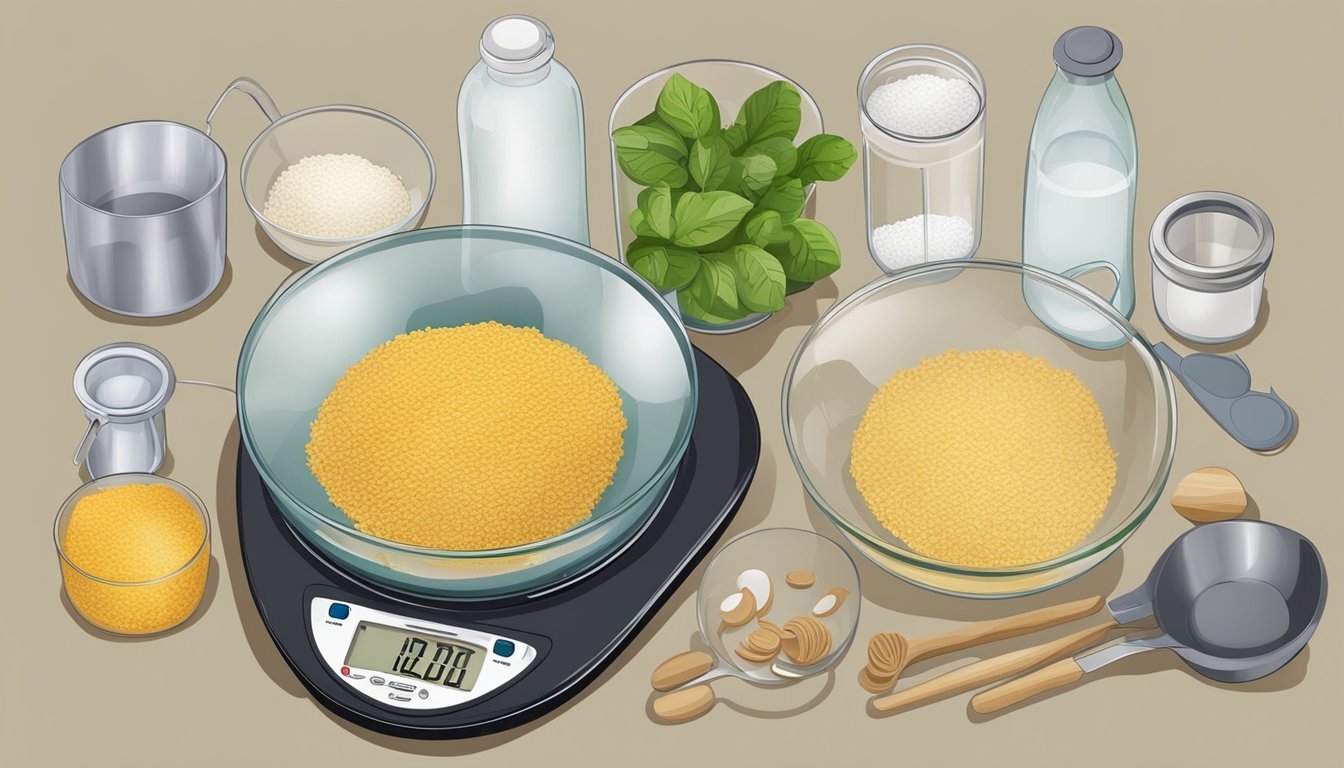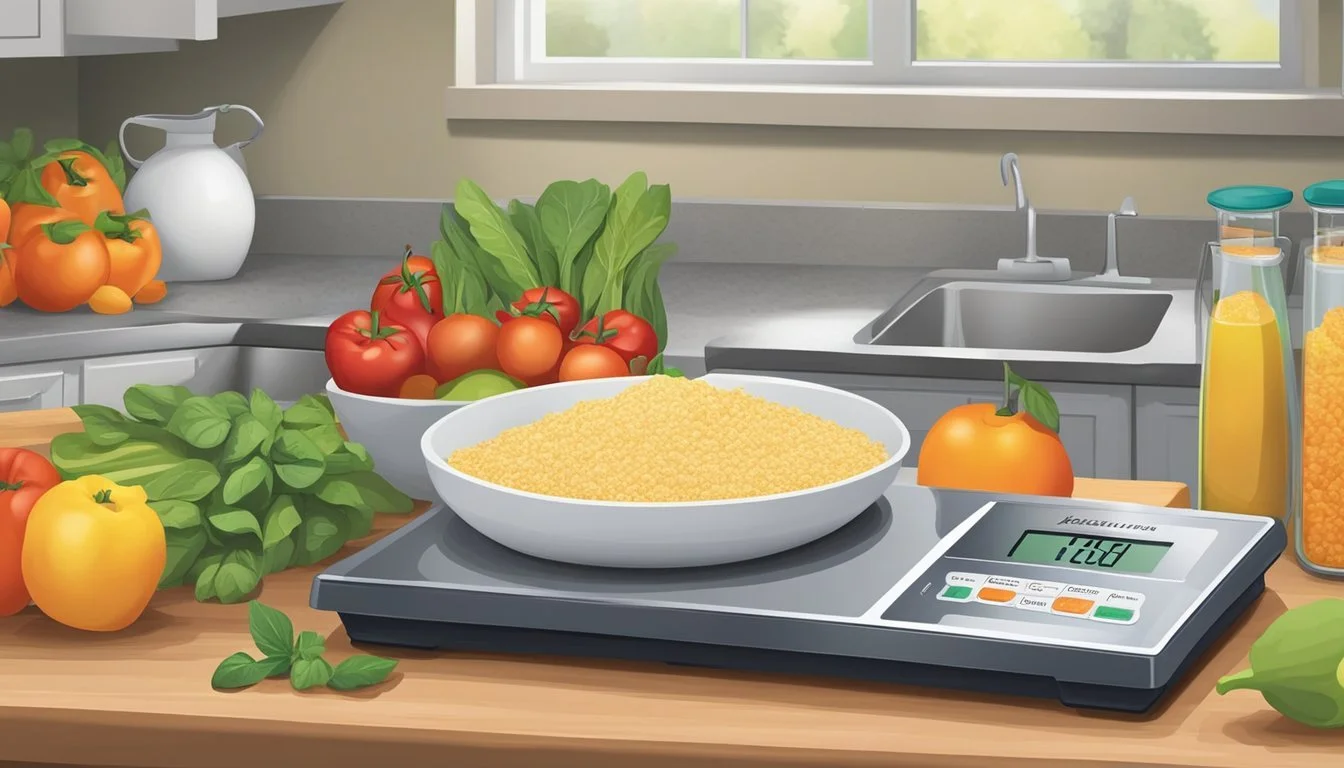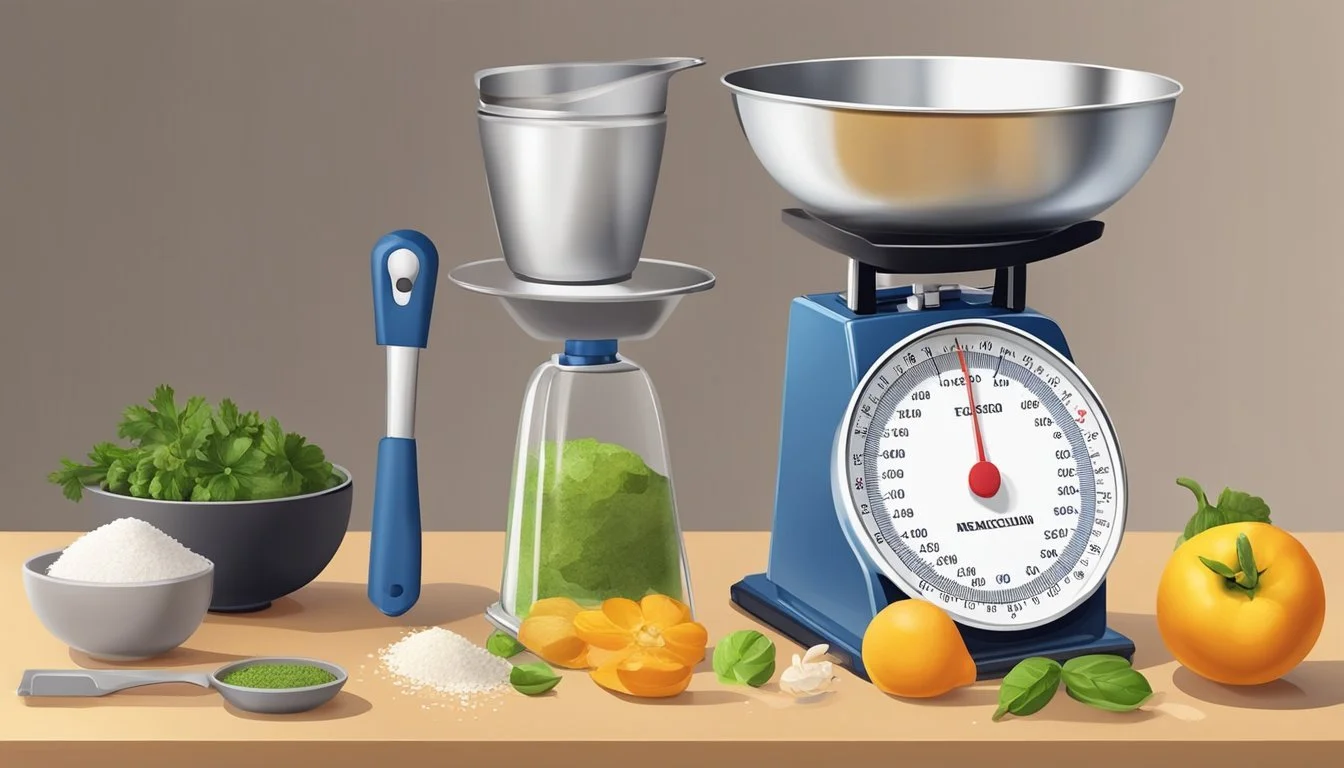How to Choose the Right Kitchen Scale
Your Guide to Accuracy and Convenience
Selecting the right kitchen scale is a critical decision for anyone who takes their cooking seriously, whether they're a home cook or a professional chef in a bustling restaurant. Precision in ingredient measurements is the cornerstone of great recipes, especially in baking where the right proportions can mean the difference between a fluffy cake and a culinary disaster. Kitchen scales offer the accuracy and consistency needed to create the perfect balance of flavors and textures in a dish.
Kitchen scales come in a variety of styles and capacities, catering to different culinary needs and preferences. For a home kitchen, where space might be at a premium, a compact digital scale with a clear display might be the preferred choice. In contrast, a commercial kitchen might require a larger, more durable model to withstand the rigors of frequent, heavy usage. Considering factors such as capacity, accuracy, size, and ease of cleaning are important steps in choosing a scale that aligns with one's personal or professional culinary demands.
Ultimately, the ideal kitchen scale blends practicality with precision. Look for features such as a flat weighing surface for easy cleaning and laminated buttons that withstand messes. The accurate scale should deliver quick readings and have a capacity that handles the volume of ingredients typically used. By focusing on these elements, cooks can ensure they select a kitchen scale that elevates their culinary creations, whether they're preparing a family dinner or a five-course meal for restaurant patrons.
Understanding Kitchen Scales
Selecting an appropriate kitchen scale involves understanding the different types available, the units they measure in, and the accuracy and precision they offer. These factors are crucial to cater to diverse cooking and baking needs, ensuring recipes are followed with consistency.
Types of Kitchen Scales
Kitchen scales typically fall into two categories: digital and mechanical.
Digital Kitchen Scales tend to offer more precision and can easily switch between different units of measurement (ounces, grams, pounds). They display readings on an LCD screen and often feature additional functions like tare and automatic shut-off.
Mechanical Kitchen Scales, also known as analog scales, are traditional and do not require batteries. These scales indicate weight by using a spring mechanism which points to the correlating value on a dial.
Each type comes with its own set of advantages, and the choice often depends on the user’s preference for convenience or a more classic approach.
Units of Measurement
Kitchen scales should offer a range of units of measurement to cater to different recipes. The primary units used in the kitchen are:
Ounces (oz): A standard unit in the imperial system typically used for smaller quantities.
Pounds (lbs): Also part of the imperial system, suitable for measuring heavier items.
Grams (g): The metric system's base unit for mass, allowing for fine measurements.
Kilograms (kg): Larger metric unit, convenient for big quantities.
The ability to switch between metric and imperial units is a beneficial feature of modern kitchen scales.
Accuracy and Precision
Accuracy and precision are foundational to a kitchen scale's functionality:
Accuracy refers to how close the measured weight is to the actual weight of an item.
Precision relates to the scale’s ability to consistently return the same measurement for the same item.
The key is to find a scale that measures in small enough increments for the user’s needs, such as to the nearest gram or even tenth of a gram for more delicate baking.
Key Features to Consider
When searching for the ideal kitchen scale, it's vital to assess specific features that enhance its functionality and convenience. These features contribute to the scale's accuracy, usability, and adaptability in the kitchen.
Tare Function
The tare function is essential for precise measurements. This feature allows the user to zero out the scale after placing a container on it, ensuring that only the contents are weighed. It's a fundamental tool for recipes that necessitate incremental ingredient additions.
Weight Capacity
Weight capacity is a crucial aspect, with most standard kitchen scales handling up to 11 pounds. For those who frequently handle larger quantities, such as bulk baking, scales with a higher capacity, like 17 pounds, might be necessary. A user must choose a scale that can fully accommodate their cooking and baking needs.
Display Types
Scales come with various display types, including digital and analog. A backlit LCD display is favorable for readability in different lighting conditions. Additionally, for those who multitask in the kitchen, a pull-out display can prove useful, as it remains visible even when large bowls or plates cover the scale.
Size and Storage
When considering size and storage, one should aim for a compact and slim design for efficient use of space. The ideal kitchen scale is not only easy to store but also easy to clean. A flat scale surface and controls that are seamlessly integrated facilitate simple maintenance.
Selecting the Right Scale for Different Uses
Choosing the right kitchen scale involves considering the tasks it will be used for, such as baking or general cooking, ensuring precise measurements of ingredients.
For Baking
When selecting a scale for baking, precision is paramount. Bakers require scales that offer fine accuracy because even slight deviations in ingredients like flour or sugar can affect the texture and rise of cakes, biscuits, and bread. Digital scales are preferred for their precision, often measuring to the nearest gram. Bakers benefit from scales with a 'tare' function to easily weigh multiple ingredients in one bowl.
Accuracy: at least 1 gram
Features: Tare function, large capacity for big recipes
For General Cooking
For those engaged in general cooking, a scale with a moderate measuring range suffices. Users typically do not need the ultra-fine precision required in baking, but consistent and reliable readings are still important. Durability and ease of cleaning should be considered, as the scale will be used with a wide variety of ingredients. A digital scale with a clear display and intuitive controls is advisable.
Measuring range: Generally up to 5 kg
Durability: Easy to clean and withstand frequent use
For Specialized Cooking Projects
Specialized cooking projects, such as preparing large quantities for meal prepping or canning, demand kitchen scales with high capacity. Some recipes might also need very fine measurements of potent spices or additives, necessitating a scale with detailed precision. For these projects, scales that combine a high capacity with sensitivity are ideal.
Capacity: Large, over 10 kg for bulk recipes
Precision: Accuracy for small measurements, often below 1 gram
Material and Durability
When selecting a kitchen scale, the material from which it's made and its construction are vital factors that affect durability and ease of cleaning. A scale should withstand the rigors of a kitchen environment while maintaining accuracy.
Plastic vs Stainless Steel
Plastic:
Pros: Often lighter, more affordable, and available in various colors.
Cons: More susceptible to warping and staining over time, which might affect durability.
Stainless Steel:
Pros: Known for its durability and ease of cleaning; it offers a more streamlined aesthetic.
Cons: Typically more expensive than plastic, but its longevity can make it a cost-effective choice in the long run.
Maintenance and Longevity
Maintenance: Scales with a stainless-steel platform are usually straightforward to maintain because they can be wiped clean with a damp cloth. Ones with laminated buttons add to this ease, preventing debris from getting trapped.
Longevity: Durable construction translates to longevity. Stainless steel and high-quality plastics are preferred materials for a long-lasting kitchen scale. Regular maintenance also plays an essential role in the lifespan of the appliance.
Digital vs Analog Scales
Choosing the right kitchen scale involves understanding the distinctive features of digital and analog models. Each type offers different benefits depending on the user's requirements for precision, technology, and usability.
Pros and Cons of Digital Scales
Pros:
Digital scales typically feature an LCD screen, and some models have a backlit screen for easy visibility in various lighting conditions.
They often provide more precise measurements and can display readings in different units of measurement.
Certain digital kitchen scales come with additional functions such as a tare feature, touch screen capabilities, or the ability to store previous measurements.
Cons:
Most require batteries or an electrical outlet to operate, which can be inconvenient if batteries die or no power source is available.
Digital scales can be more susceptible to damage from water or spills due to their electronic components.
Pros and Cons of Analog Scales
Pros:
Analog scales are generally more rugged and can withstand rougher handling compared to their digital counterparts.
They do not rely on electricity or batteries, making them always ready for use and environmentally friendly.
Cons:
Analog models may not offer the same level of precision as digital scales, typically showing measurements in larger increments.
The readability of an analog scale's measurements can be less convenient, lacking features like a backlit screen or touch screen interface.
Additional Functionality
When selecting a kitchen scale, buyers should consider additional functionalities that can make measuring ingredients more efficient and synced with modern technology needs.
Smart Connectivity
Many kitchen scales now offer Bluetooth capabilities, allowing for an easy transfer of measurement data to smartphones and other devices. This feature is ideal for those who track their food intake meticulously or prefer digital record keeping. Additionally, smart compatibility frequently comes paired with apps that provide nutritional information and more comprehensive tracking, adding to the ease of use.
Multiple Measurement Modes
A versatile kitchen scale can switch between different measurement modes such as grams, ounces, pounds, and kilograms, essential for following various recipes accurately. High-quality scales may also feature liquid volume measurement modes like milliliters and fluid ounces, ensuring consistent results regardless of ingredient type. Furthermore, kitchen scales with unit conversion functions are highly beneficial:
Grams (g) for precise measurements
Ounces (oz) and Pounds (lb) for a variety of ingredients
Milliliters (ml) and Fluid Ounces (fl oz) for liquids
Calibration and Recalibration
Proper and periodic calibration is necessary to maintain a kitchen scale's accuracy. Some scales come with calibration weights, while others can be calibrated using household items. They should include a function for users to perform recalibration as needed. A kitchen scale that can recalibrate itself or alerts the user for the need to recalibrate, ensures consistent accuracy over time. Auto-off features help preserve batteries and ensure the device is ready for use whenever it's needed.
Brands and Price Range
When selecting the right kitchen scale, consumers should consider the brand and price range to match their needs and budget. There are options across the spectrum, from budget-friendly choices to high-end investments.
Budget-Friendly Choices
For those seeking affordability without sacrificing quality, brands like Ozeri and Etekcity offer excellent choices. The Ozeri Pronto Digital Multifunction Kitchen Scale is renowned for being cost-efficient while providing reliable functionality. Typically, prices in this category range from $10 to $25.
Ozeri Pronto: Around $15
Etekcity: Between $10 - $20
Mid-Range Models
Moving up in price, mid-range scales offer additional features and durability. The Escali Primo Digital Scale is a perfect example of a mid-range model that balances cost with advanced functions. Consumers can expect to find mid-range scales priced from $25 to $50.
Escali Primo: Often around $30-$35
High-End Investments
For culinary enthusiasts looking to splurge for premium features, brands like OXO and ZWILLING stand out. The OXO 11-lb Stainless Steel Food Scale With Pull-Out Display is a high-end scale known for its superior design and precision. Scales in this bracket are usually priced at $50 and above.
OXO: Typically above $50
ZWILLING: Often in the $100 range
Tips for Efficient Use in the Kitchen
To optimize your cooking and baking experience, it's important to implement strategies for swift measuring, maintaining cleanliness, and conserving precious counter space.
Faster Weighing
Efficient use of a kitchen scale starts with speed. Digital scales are typically more user-friendly with quicker readouts than mechanical scales. They often have instant tare functions, allowing the user to subtract the weight of the container and weigh ingredients successively without removing the previous contents. For improved speed, one should ensure their scale's controls are intuitive and respond quickly.
Reducing Mess
Keeping the kitchen tidy while cooking can be challenging. Using a kitchen scale with a flat weighing surface makes it easier to clean. Incorporation of a tare function also reduces the number of dishes used, as ingredients can be added directly to one container. Additionally, using a scale with a backlit screen enhances readability, preventing spills that come from straining to see measurements.
Maximizing Counter Space
Counter space in the kitchen is often at a premium. Choosing a compact scale preserves space without sacrificing functionality. Scales with a slim profile can be stored vertically or in narrow spaces when not in use. Opting for a model that combines versatility with a minimal footprint, like those that feature unit conversion, enables one to handle various tasks without needing multiple kitchen tools.
Common Mistakes to Avoid
When selecting a kitchen scale, accuracy and consistent results are critical. It's important to understand the nuances of scale operation to avoid common pitfalls.
Ignoring Calibration
A kitchen scale should be calibrated regularly to ensure accurate measurements. Failure to calibrate can lead to inconsistent results, especially if the scale is moved frequently or stored in an unstable environment. Users should follow the manufacturer's instructions for calibrating their scale, typically involving setting the scale to zero before use.
Misunderstanding Weight Capacities
Each kitchen scale has a maximum weight capacity, and overlooking this can result in inaccurate measurements. It is imperative to check the scale's specifications before purchasing to ensure it can handle the typical loads one expects to measure. For instance, baking enthusiasts might require a scale that can accurately measure both small amounts of yeast and larger quantities of flour.
Overloading the Scale
Exceeding a kitchen scale's weight limit can not only lead to improper measurements but also potentially damage the scale. It's essential to know the scale's limit and avoid adding weight beyond this point. If one routinely measures heavy items, they should consider a scale with a higher maximum weight capacity to maintain accuracy and prolong the lifespan of the device.







